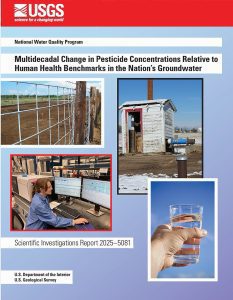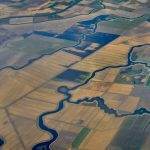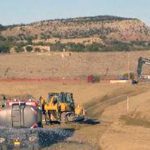- A new U.S. Geological Survey report finds pesticides in groundwater are decreasing nationwide.
- Atrazine and similar herbicides are still the most frequently detected but at lower levels.
- Only one pesticide, DBCP, still exceeds drinking-water standards in California’s Central Valley.
- Agricultural areas show the most improvement, with moderate detections dropping from 13% to 4%.
- Long-term monitoring remains crucial to protect drinking-water sources.
Monday, October 6, 2025 — The U.S. Geological Survey (USGS) released a major study on September 24, 2025, showing that pesticide contamination in groundwater across the United States has generally declined over the past 30 years. The findings are based on data collected from 59 well networks across 25 major aquifers from 1993 to 2023.
across the United States has generally declined over the past 30 years. The findings are based on data collected from 59 well networks across 25 major aquifers from 1993 to 2023.
Researchers evaluated 22 pesticides, comparing their concentrations to federal human health benchmarks — standards used to determine whether water is safe for drinking. The results show steady decreases in moderate-level detections over three decades.
“The percentage of wells that had groundwater pesticide concentrations in the moderate concentration category decreased from 7 percent in decade one to 2 percent in decade three,” the report stated.
Atrazine Still Leads, but Levels Are Falling.
Atrazine, along with its byproduct deethylatrazine, continues to appear most frequently in groundwater, particularly in regions with heavy agricultural use such as the Midwest and Semiarid West. However, detections have dropped sharply.
In the first decade of monitoring (1993–2001), atrazine and related compounds were found at moderate concentrations in six ecoregions. By the third decade (2013–2022), those detections were limited mainly to the Midcontinent region. Scientists note that improved pesticide management, changes in use, and natural degradation processes likely contributed to the decline.
Other once-common herbicides such as alachlor, prometon, and simazine showed similar downward trends.
DBCP: A Persistent Legacy in California.
The only compound that still exceeded its federal health limit was 1,2-dibromo-3-chloropropane (DBCP), a soil fumigant banned in 1977. Despite being outlawed nearly half a century ago, traces remain in groundwater within California’s Central Valley.
The USGS found that while half of all samples exceeded the federal maximum contaminant level in 1993, that number had dropped to 15 percent by 2023. The study’s authors called this progress “statistically significant” but emphasized that DBCP remains a concern in certain deep agricultural wells.

 .
.Rural Water Systems Show Progress.
Agricultural monitoring networks had the highest percentages of pesticide detections in the early years, with 13 percent of wells showing moderate concentrations in the 1990s. By the most recent decade, that number had fallen to 4 percent.
Urban and domestic wells showed even lower levels, with no moderate detections in urban areas after 2012 and just one percent in domestic wells throughout the study period.
Why It Matters.
Groundwater provides drinking water for about 13 percent of the U.S. population. Unlike public water systems, most private domestic wells are not subject to regular state or federal testing. As a result, long-term USGS monitoring remains vital for early detection of potential risks.
While the reduction in pesticide concentrations represents a public health success, the report cautions that even small quantities of certain chemicals may still pose health risks below official benchmarks. Continued tracking will help water managers and farmers identify new or re-emerging threats to safe drinking water supplies.
FAQ
What does this study cover?
It examines groundwater samples from 59 well networks across 25 major aquifers in the United States, collected from 1993 to 2023.
Which pesticides are most common?
Atrazine and its byproduct deethylatrazine remain the most frequently detected, though levels have declined.
What is DBCP and why is it still found?
DBCP is a pesticide banned in 1977. It persists because it is highly stable underground and moves slowly through aquifers, particularly in California’s Central Valley.
What is a “human health benchmark”?
It’s a federal standard defining the concentration of a chemical that poses potential health risks in drinking water. The benchmarks include enforceable limits and advisory levels.
Are private wells included?
Yes, domestic-supply wells were part of the study, but homeowners remain responsible for testing and maintaining their water quality.
Why are pesticide levels going down?
Researchers attribute the decline to reduced use of older pesticides, improved agricultural practices, and natural degradation over time.





